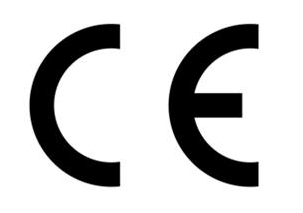Thanks to the
Sensor, Switch, Smart Camera, and Machine Vision device OEM's who've helped us compile our listing here.
Num |
A |
B |
C |
D |
E |
F |
G |
H |
I |
J |
K |
L |
M |
N |
O |
P |
Q |
R |
S |
T |
U |
V |
W |
X |
Y |
ZCAD file - Computer files for defining parts for use in CADD systems... Also see 2D CAD file
CADD - Acronym that stands for "Computer Aided Design & Drafting"...
Capacitive sensor - Capacitive proximity sensors are triggered by a change in the surrounding electrostatic field. The transducer of a capacitive sensor is configured to act as the plate of a capacitor. The dielectric property of any object present in the sensing field increases the capacitance of the transducer circuit and, in turn, changes the frequency of an oscillator circuit. A detector circuit senses this change in frequency and signals the output to change state.
Cascade - To combine logic circuitry to get more complex logic or timing control. (Inputs and outputs are wired in series.)
CE - A logo and product marking indicates compliance with EU (European Community) legislation, and regardless of location of manufacture a CE mark enables a product free movement within the European market.

CENELEC - The "European Committee for Electrotechnical Standardization". Responsible for the development of standards covering dimensional and operating characteristics of control components. Similar in nature to ANSI.
Chatter - Continuously switch "On" and "Off", instead of stable contact closure or opening. See Hysteresis
CNC - An acronym for "Computer Numerically Controlled", type of machines tool (lathes, mills, etc.) that require minimal manual labor. CNC machines produce parts largely automatically by a computer program that guide machine motions to generate (form) parts from metals, plastics, and other materials.
Collimation - See See Autocollimation
Complementary output (2) - (1) Output circuit with dual output devices where one output is normally open and the other is normally closed or de-energized. Output that can be both light operated and dark operated. Also known as 4-wire DC controls. (2)The dual output configuration of a DC sensing device where one output switch is a sinking device (NPN transistor) and the other output switch is a sourcing device (PNP transistor).
Component system - See Separate controls
Contact bounce - When the contact pair closes, the contacts make and break several times before a stable closed condition is established. Contact bounce is not a characteristic of solid-state switch contacts.
Continuous load current - The maximum current level allowed to continuously flow through the sensor output in the "ON" state.
Contrast (optical) - See Fixed focus
Control base - Unit remote from light source/photoreceiver (or proximity sensor) in which amplification and conditioning or the input signal takes place. Usually contains a power supply and an output device.
Control system A device, or set of devices, that manages, commands, directs or regulates the behavior of other devices or systems (PLC, Industrial Computers, etc.). Industrial control systems are used in industrial production for controlling equipment or machinery.
Convergent beam sensing mode - See Margin
Corner-cube reflector - See Retroreflector
Correction factors - Suggested multiplication factors taking into account variations in the target material composition. When figuring actual sensing distance this factor should be multiplied with the nominal sensing distance.
Crosstalk (3 types) - (1)Acoustical- Acoustical: occurs when an ultrasonic sensor responds to the signal from an adjacent ultrasonic sensor. Can often be minimized by installing baffles between the sensors and/or extension tubes ahead of the sensing face. (2)Electrical- Electrical: occurs in modulated photoelectrics when the modulated emitter signal couples directly onto the receiver lead wires, which results in a “lock-on” condition of the output circuitry. (3)Optical- Optical: occurs when a photoelectric receiver responds to light from an adjacent emitter.
CSA - Abbreviation for "Canadian Standards Association", a testing agency. “CSA certified” are products tested and approved by the Canadian Standards Association as meeting Canadian electrical and safety codes.
Current consumption - The amount of current required to power a sensor or control excluding its load.
Current sinking - See Sinking
Current sourcing - See Sourcing
Num | A | B | C | D | E | F | G | H | I | J | K | L | M | N | O | P | Q | R | S | T | U | V | W | X | Y | Z


